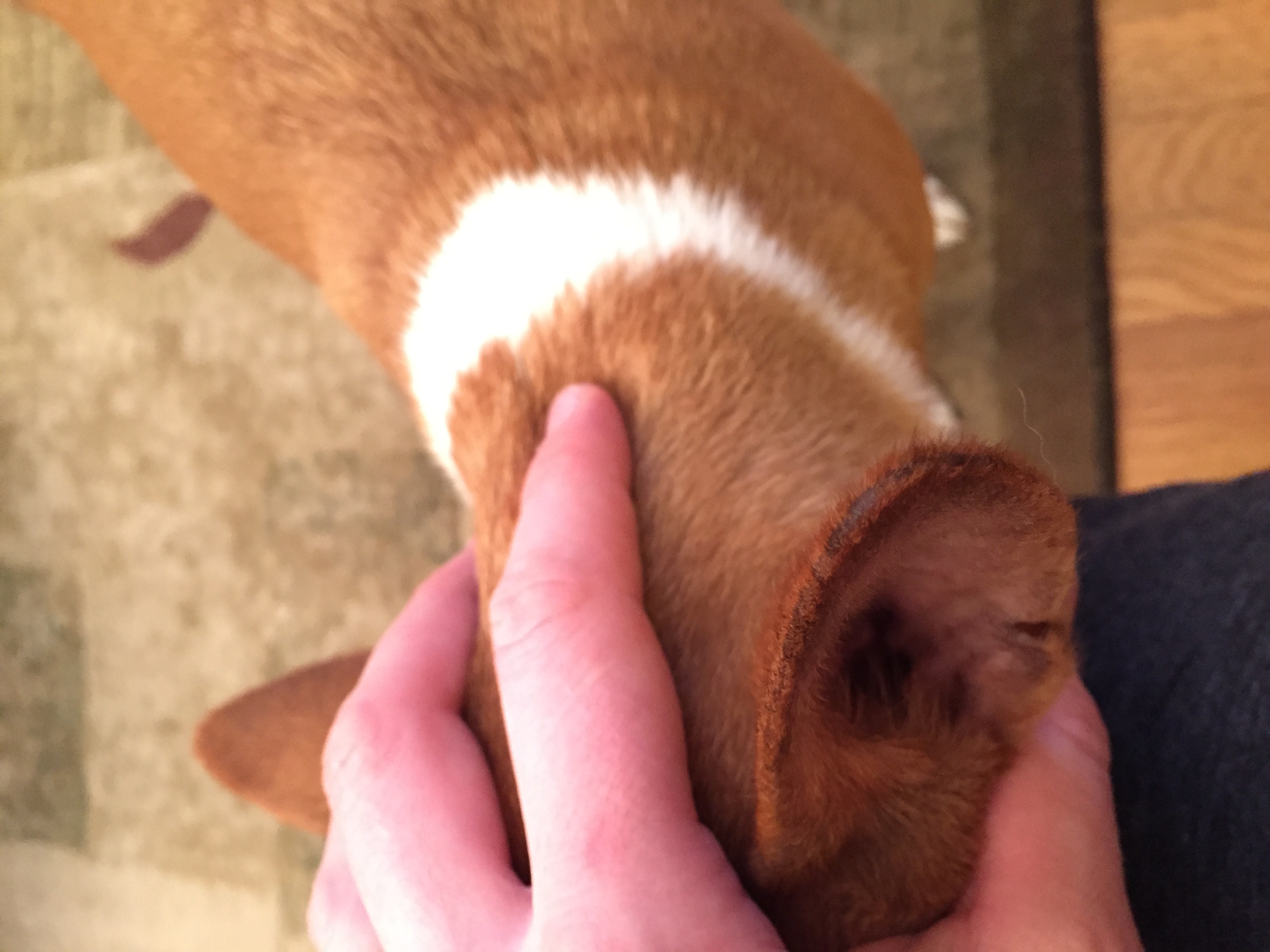Hairloss on the ear edges
-
Chance has been loosing hair on the edges of his ears. He has been particularly sensitive to allergies and cold weather and scratching his ears, which get dry and flaky. I have been putting vitamin e oil around the edges and that seems to help the scratching, but not helping the hair loss.

-
For reasons that elude me, I keep getting a stupid message that my post is flagged as spam. HELLO? I'll take out link and see if this works.
Alex, assuming that you had them scraped for mites, then this article runs through other very likely causes:
Quote:
Endocrine diseaseseborrheic ear edges in a patient with hypothyroidism.
Endocrine diseases that can produce ear edge changes include hypothyroidism and light-responsive alopecia. The key to differentiating between the two is assessing whether any other clinical signs are present. With hypothyroidism , weight gain, exercise intolerance, hyperpigmentation, seborrhea and symmetrical hair loss may be present. A free thyroxine blood concentration test (free T4) by equilibrium dialysis will help confirm the diagnosis. Light-responsive alopecia (Photo 3) can also present with symmetrical ear edge alopecia, seborrhea and hyperpigmentation. The results of blood work are usually normal, and, in contrast to hypothyroidism, no other systemic clinical signs are usually present. This disease is seen primarily in the Midwest and in northern climates during dark winters, resulting in a lack of natural sunlight exposure. Specific breeds affected include Doberman Pinschers, Labrador Retrieverss, Boxers and English Bulldogs.
Atopic dermatitisPhoto 3: Alopecia and hyperpigmentation of the ear pinna in a dog with light-responsive alopecia.
Atopy in some breeds such as Boxers and Labrador retrievers can manifest with crusty, alopecic ear edges. This is often mistaken for scabies since these dogs are pruritic and can have a positive pinnal/pedal reflex. It is certainly appropriate to treat for scabies, as anytime scabies is suspected, treatment should be initiated. However, if the condition persists after the appropriate scabies treatment is completed, atopy should be considered.
SeborrheaPhoto 4: Malassezia dermatitis of the ear edge and nasal planum in two sibling Dachshunds.
Ear edge seborrhea due to Malassezia yeast or keratinization disorders can present in breeds such as Yorkshire Terriers and cocker spaniels, respectively. Skin smears can confirm Malassezia yeast, and a skin biopsy confirms keratinization defects such as vitamin A-responsive dermatosis. Yorkshire Terriers and Dachshunds are most commonly susceptible to Malassezia ear edge dermatitis (Photo 4). Scaling of the dorsal nasal planum may also be present. Vitamin A-responsive dermatosis usually results in a thicker ear edge scaling sometimes accompanied by crusting, follicular casts and fissuring.<<
-
The above and the continued info from
veterinarynews dot dvm360 dot com/ear-edge-dermatitis-look-beyond-scabies -
Thanks, read the article. Taking Chance to the vet next week to do a thyroid panel and take mite skin swabs. My suspicion is that it's ear edge dermatitis developed due to seasonal colds and allergies, which seems to be common from what I read in another thread. He has been getting fish oil capsule every morning for a few months now, which makes the fur softer, but does not help the ears. Overall all the ear scratching started as it got cold and rainy and furnace started kicking in. I myself had allergies throughout this as well.
-
Hope that's it. Some people actually massage oils into the ears, but I worry that might clog and cause more issues. Post so we know. :)
Btw, LOVE the new format. It's really easy to navigate :)
-
YEAH! Easy to fix beats heck out of anything else. Might try getting baby wipes and wipe him down when he come in to help remove pollens.
-
Maybe he's allergic to her! :) But there are hypoallergenic fragrance free ones.
-
Our Buana has the same thing, since he is a puppie.
Every winter his ears get dry, and loose hair.
For Buana there is no medical issue behind it but it looks like the dry air of winter gives the edges of the ears a hard time.
We have tried all kind of things but nothing helps, we stopped finding what to do and let it, and in spring the ears get the hairs back..
But with Buana it does not itch..You can try almond oil, but you have to start before they ears loose the hairs...
